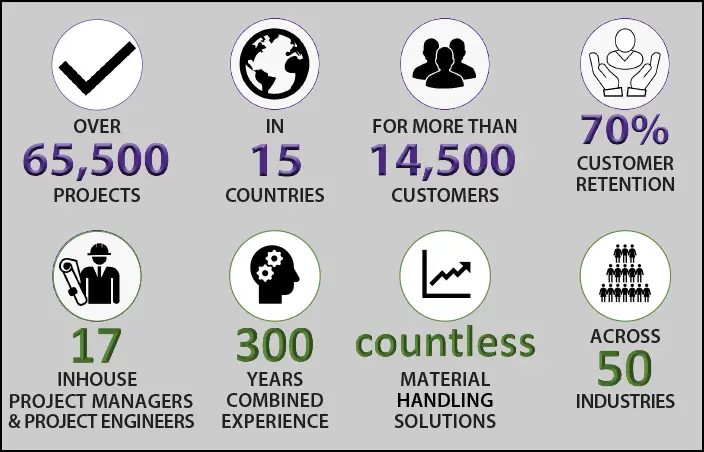Seismic Racking Design Considerations for Your Material Handling System
Although storage systems are not buildings, they should be designed as such for safety in the event of seismic activity. Seismic racking specifications in many areas of the country are critical to the safe operation of storage racks. If you are planning to build a new material handling system or reconfigure your existing one, knowing the building codes in your location, if you are in a higher risk seismic zone and what that means for your material handling system is very important.
SEISMIC RACKING DESIGN CATEGORIES
Design requirements are set by the Rack Manufacturers Institute (RMI) and American National Standards Institute (ANSI). RMI created the R-Mark Certification Program to identify systems that are designed and tested to meet their seismic zone load requirements. Seismic zones are put into Seismic Design Categories and provide boundaries to require greater safety in areas where there is more risk.
The Seismic Design Categories range from A to E and represent the rate of activity, soil classifications and type of buildings. Below are the seismic design categories mapped out throughout the US. Category A (shown in white) is an area at minor risk with good soil. If you reside in Categories B or above, you are in a moderate to high-risk seismic zone, requiring your racking system to be stronger and able to absorb the shock of activity and withstand movement to avoid collapse or damage to your inventory.

DESIGN FACTORS TO CONSIDER
Based on the facility location, a professional engineer can estimate how much the rack will move during seismic activity. These calculations can determine what seismic separation is needed between aisles within the system and between the rack and your building structure and what type of racking components are a necessity.
Since a warehouse rack design should accommodate high density in compact areas, it is crucial to factor the down-aisle seismic force. This can be determined by calculating the average weight of the unit load dividing it by the maximum weight per pallet position. For example, if a selective rack system averages 2,150 lbs. per row and the maximum pallet weight is 3,000, the down-aisle seismic force would be 0.71.

Additional seismic racking components to consider when evaluating a structure’s ability to resist all applied load (static or seismic) applications:
- Gauge, or thickness of steel components
- A heavier gauge is required depending on the system height and load
- Anchors
- Anchors that are near floor edges must have an adequate distance from the edge to carry required loads
- Footplates
- Larger, thicker footplates are more damage resistant
- Frame bracing panels
- Heavy or special strut panels can be used for additional lateral support
- Beam elevations and sizing
- Removing beams on lower levels can increase movement of the columns and beams during seismic activity
- Beam connection methods
- Large beam connectors added can provide additional lateral support
- Bolted vs welded
- Bolted, structural steel racking systems provide higher capacities and greater durability
- Concrete floor and sub-soil
- The thickness of the building floor and soil classification must have adequate strength to support the system
Safeguarding both your employees and inventory should be a top priority. If systems are not properly designed, installed, maintained and loaded, earthquake ground motions can wreak havoc on your operation. For more information on seismic racking safety best practices, refer to RMI and ANSI’s Specification for the Design, Testing and Utilization of Industrial Steel Storage Racks.
Connect With Us!
Whether you are planning to build a new operation or are considering relocating, it is important to have a qualified professional oversee the design and permitting processes of your system. Backed with over 590 years of industry experience, REB can help provide a seamless transition of your operation.
Fill in the ‘Submit Your Inquiry’ form to give us a better idea of your needs, and we’ll contact you to help with any further questions or requirements you have.
Share this post:
Submit Your Inquiry
Testimonials
Blog Topics By Category
Blog Topics By Industry

